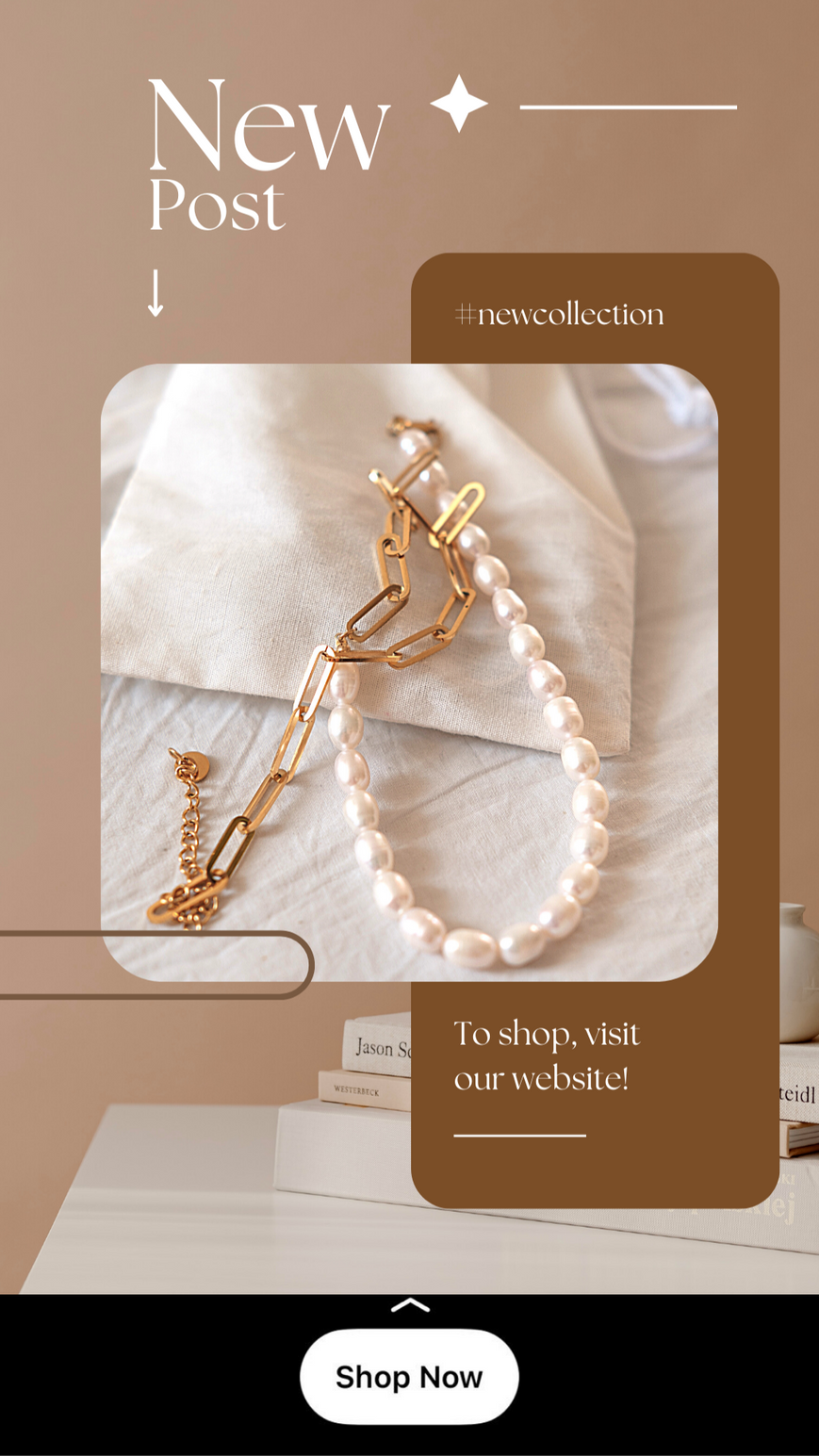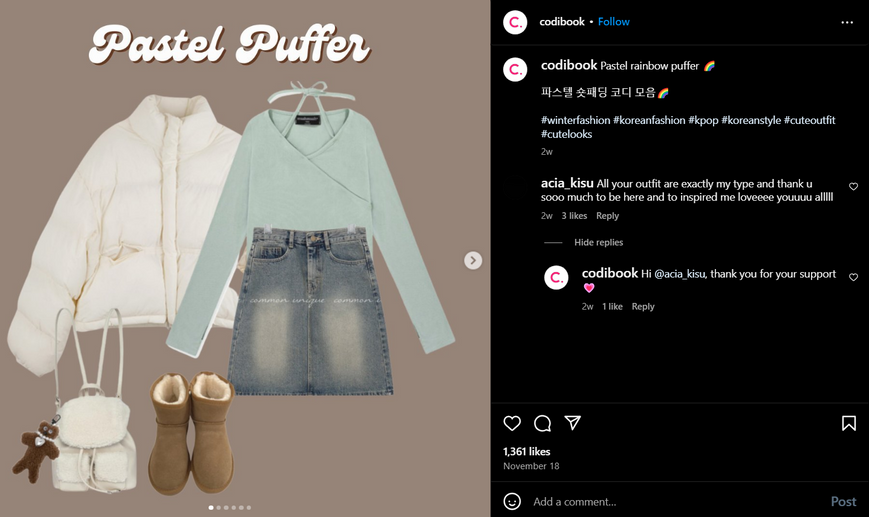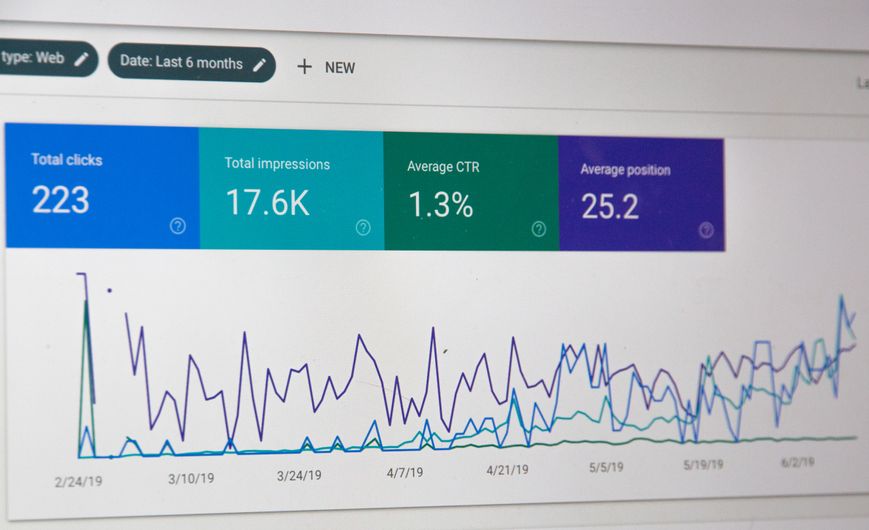How to Promote Online Clothing Business: 5 Detailed Tips
Over the last few years, e-commerce has become an indispensable part of global retail. Like many other industries, buying and selling goods has undergone a substantial transformation following the advent of the internet. Thanks to the ongoing digitalization of modern life, consumers all over the world now profit from the perks of online transactions. With over five billion internet users worldwide and growing, the number of people making purchases online is ever-increasing.
In 2022, retail e-commerce sales were estimated to exceed 5.7 trillion U.S. dollars worldwide, and this figure is expected to reach new heights in the coming years. With such a vast market potential, it's crucial for brands to adopt effective strategies on how to promote online clothing business and stand out in the competitive landscape.
If you're an aspiring or established online clothing business owner, you're in the right place. In this blog post, we'll share five detailed tips to help you successfully promote your online clothing business. By implementing these tips, you'll be well on your way to attracting more customers, increasing sales, and building a strong brand presence in the ever-evolving world of online retail.
Before we dive into the details, let's quickly preview the topics we'll be covering:
- Build a Website (if you don't have one)
- Collaborate with Influencers
- Use your Instagram Efficiently
- Reach your Audience with Paid Ads
- Work on your SEO
1. Build a Website (if you don't have one)
If you aspire to establish a systematic and functional sales mechanism for your online clothing business, it's nearly impossible to achieve without a website. While some brands rely solely on platforms like Instagram for sales, this approach has its limitations. For instance, in certain regions, customers may have to place orders through direct messages (DMs), which can lead to trust issues and payment complications. Even in countries like the United States where direct selling through Instagram is possible, it still falls short of providing a comprehensive sales solution.
Think of your website as the virtual counterpart of a physical store. It not only enables you to showcase your clothing line but also offers a platform to provide an immersive brand experience to your customers. Having a website is not just a helpful addition; it's an essential requirement for successful online selling. In fact, you'll find that having a website is mandatory for implementing some of the strategies we'll discuss later.
To introduce your clothing business online, building a website is essential. Your website serves as a powerful tool for introducing your brand to potential customers and instilling trust in their minds. When someone hears or sees your brand name, their instinct is to visit your website. It's a place where they can learn more about your clothing line, explore your unique offerings, and get a sense of your brand's identity and values. A well-designed and user-friendly website enhances your credibility, establishes your brand's authority, and fosters trust among your target audience.
By establishing a website, you not only lay the foundation for a robust online sales strategy but also elevate your brand's visibility and credibility.
If you don't have a website yet and are wondering how to set one up, don't worry! Refer to our blog post, where we provided detailed recommendations and step-by-step guidance to help you create a compelling online presence for your clothing business.
2. Collaborate with Influencers
When it comes on how to promote online clothing business, one highly effective method, albeit a bit costly, is collaborating with influencers. Collaborating with influencers for your e-commerce marketing is like having a secret weapon. They have a loyal audience who trusts their recommendations, so teaming up with them helps you reach a wider audience and gain credibility. Influencers create authentic content that captures hearts and minds, while their user-generated posts serve as social proof.
Collaborating with influencers offers immense potential for promoting your online clothing business. By leveraging their reach, credibility, and ability to create authentic content, you can effectively increase brand awareness, drive sales, and connect with your target audience. Influencer marketing offers many more benefits and the benefits are often proven since influencer marketing provides measurable results and a return on investment.
The global influencer marketing market has experienced exponential growth, reaching a staggering 21.1 billion U.S. dollars in 2023. Given the significant increase in influencer marketing spending and its proven benefits, it is no surprise that businesses continue to invest in this strategy. So, if you want to boost your e-commerce game and make a splash, influencers are the way to go!
For instance, H&M, a renowned clothing brand, harnessed the potential of influencer marketing by partnering with a range of celebrity influencers to promote its holiday line. The campaign resulted in the creation of four captivating video ads, featuring the latest holiday outfits, which captivated over 12 million consumers. This success was attributed to several key factors: building brand awareness and desirability during the holiday season, driving clothing sales, and creating authentic content aligned with each celebrity's personality and lifestyle.
One noteworthy aspect of H&M's campaign was their decision to collaborate with not only the largest celebrity influencers they could afford, but also lesser-known personalities with highly engaged and devoted social media followings. By diversifying their influencer partnerships, H&M maximized their campaign's impact while optimizing their resources.
While your clothing brand may not have the same resources as an industry giant like H&M, finding suitable influencers for your niche is still achievable.
In the upcoming sections of this article, we'll guide you through the process of identifying the most suitable influencer category for your brand. Remember, success in influencer marketing lies in finding the right match between your brand and the influencer's audience and values.
Different Categories of Influencers Based on Their Follower Count
When it comes to working with influencers, it's crucial to choose the right ones for your online clothing business. Not every influencer will be a perfect fit, and selecting the wrong one can be detrimental to your brand's finances. That's why thorough research and careful consideration are essential. Before diving into the influencer selection process, it's important to determine your boutique's location and align your choice accordingly.
Let's explore the different categories of influencers based on their follower count to help you make an informed decision.
a. Nano-Influencers:
Follower Count: 1,000 - 10,000
Main Feature: Small but highly engaged audience, often have a strong connection with their followers.
b. Micro-Influencers:
Follower Count: 10,000 - 100,000
Main Feature: More reach than nano-influencers, still maintain a high level of engagement, often seen as relatable.
Lonca's Advice: You need to find the most suitable influencer depending on your business' current situation. Collaborating with a micro-influencer may require a serious budget, but consider this - nano-influencers boast a more loyal follower base, creating a tight-knit community. Therefore, Lonca recommends opting for nano-influencers, even if you're a mid-level clothing business.
c. Macro Influencers:
Follower Count: 100,000 - 1 million
Main Feature: Considerable reach and influence, but not as high as top-tier influencers, often have a niche focus.
By categorizing influencers based on their follower count, you can discern their unique qualities and characteristics. However, it's essential to note that making a choice solely based on follower count would be incomplete.
Therefore, it is important to understand how to find the right influencer to promote your online clothing business. Keep reading as we guide you through the strategic steps to make the most of influencer collaborations.
How to Find the Right Influencer
a. Understand your Own Audience
To attract people to buy your clothes, the first goal for your brand should be to truly understand your audience. This goes beyond just your current followers and includes the potential audience your brand can appeal to.
By diving into the demographics, interests, and behaviors of your audience, you can find the perfect influencer fit. It's crucial because if an influencer's follower base doesn't align with your target audience, it puts your business at risk.
b. Set your Objectives
Whether you're a new brand looking to boost brand awareness or an established one aiming for product promotion and sales, clarifying your objectives is key.
Lonca's Advice: Influencer marketing is a strong but expensive way to promote your brand. It's best used after you've started making sales and your brand is settling in. We don't recommend hiring an influencer just for brand awareness. Your job is to make people know your brand through other ways we've mentioned in this blog. That's why it's smarter to spend your budget on influencer marketing when you expect it to bring in more money, like when you're launching a new product, offering a seasonal discount, or just trying to boost sales.
Lonca's Advice: Maintaining a robust stock is key when promoting a specific product with an influencer. Ensure it's easily restockable to meet rising demands over time.
c. Make a Research and Form a List of Influencers
Now it's time to create your influencer list armed with the insights you gained about your audience and your objectives. During this process, thorough research is vital. You'll assess whether an influencer's target audience matches your own and if they have the qualities to help you achieve your goals.
To conduct your research, consider the following avenues:
Social Media Platforms: Instagram, YouTube, and TikTok are excellent platforms to explore. Utilize Instagram's search and explore feature, delve into niche-related content on YouTube, and navigate through the discover page and hashtags on TikTok.
Agency Partnerships: Consider reaching out to influencer marketing agencies that work directly with influencers. A simple Google search can help you find suitable agencies.
Check Competitors: Take a look at influencers collaborating with brands in a similar niche to yours. It can provide inspiration and insights into potential influencer partnerships.
Referrals: Tap into your personal and professional networks for recommendations. Ask if anyone knows influencers who would be a great match for your brand.
d. Evaluate Engagement and Reach
After creating your influencer list, it's time to dig deeper and evaluate each influencer's engagement and reach. Remember, it's not just about follower count. Pay attention to metrics like likes, comments, shares, and the overall activity of their followers. Determine if their posts truly resonate with their audience and if they can drive meaningful interactions.
e. Authenticity and Alignment
Authenticity is paramount in influencer marketing. Choose influencers whose personal brand aligns with your clothing brand. Ensure that their follower base is similar to your target audience. Additionally, consider their style and ensure it aligns with your brand's aesthetic. Authenticity creates a genuine connection, fostering trust and driving sales.
Imagine you have a clothing brand that specializes in bohemian style outfits. Now, would it make sense to collaborate with an influencer who is known for rocking streetwear fashion? Probably not! Why? Well, think about it. Your audience, who loves that boho vibe, might feel that the collaboration isn't authentic. And when authenticity is missing, it's unlikely that sales will be made. So, it's crucial to find influencers whose style and personal brand align with your clothing brand to create that genuine connection with your audience.
f. Negotiate Terms
Finally, it's time to reach out to the remaining influencers on your list and discuss collaboration terms, including pricing. Evaluate the options and choose the most suitable and favored influencers to partner with.
By following these steps, you'll be well on your way to finding the right influencers who can elevate your brand and help you promote your online clothing business.
3. Use your Instagram Efficiently
Social media usage is particularly crucial for businesses, and Instagram, in particular, can be a game-changer on how to promote online clothing business.
First off, it gives you a massive audience to connect with. Think about it – billions of people are active on social media platforms, and that means incredible visibility for your business. Plus, you can target your marketing efforts like never before.
With advanced targeting options, you can reach the exact people who are most likely to be interested in what you offer. It's like having a virtual bullseye for your ideal customers. But it's not just about reaching people – it's about building your brand. By sharing valuable content, engaging with your followers, and being authentic, you can create brand awareness and trust.
People often turn to social media platforms to research businesses and establish trust before making a purchase. Instagram serves as a powerful and cost-effective marketing tool that you can leverage to boost your brand's visibility.
Lonca's Advice: There are various social media platforms to choose from, but based on our experience working with boutiques and other clothing brands, Instagram stands out as the most efficient. We recommend that clothing brands select and concentrate solely on Instagram. Instead of spreading resources across multiple platforms, channel all efforts into mastering one. In simpler terms, it's better to excel in one thing than to attempt to be good at everything.
Promoting clothing brand on Instagram requires efficient use of the platform with the in-depth tactics to increase your sales, which you can find by checking out our related blog. if your only purpose is to promote, there are other methods to use Instagram as well. Here, we'll share additional strategies that can help you make the most of this platform.
a. Post Regularly
When it comes to promoting clothing brand on Instagram, posting regularly is key. But here's the thing: it's not about posting as frequently as possible. Quality and consistency matter more than sheer quantity.
Rather than bombarding your followers with a flurry of posts, it's important to strike a balance. Consistency and maintaining a steady flow of valuable content are more important than posting excessively. When you share content constantly, you risk compromising on quality, which can have a negative impact on your brand's perception. It's about finding that sweet spot where you can consistently deliver high-quality posts that resonate with your audience.
To ensure a smooth and planned approach to content sharing, it's beneficial to create a posting schedule. By organizing your posts in advance, you gain better control over your social media accounts and can track your progress more effectively. Consider creating a weekly or monthly content calendar for yourself, outlining the topics, visuals, and captions you plan to share. This proactive approach saves you time and eliminates the daily stress of figuring out what to post.
As a clothing brand, we at Lonca understand the importance of streamlining content management. That's why we follow a structured approach to our social media posting. To assist you in this process, we recommend utilizing content management tools such as the HubSpot Social Media Content Calendar Template. This template allows you to plan and organize your content in advance, ensuring a consistent flow of engaging posts.
To put your posting schedule into a better order, there is another method you could use. Meta Business Suite allows you to control your content by simplifying the process of building and managing your presence on Facebook and Instagram. It’s where you can post, track performance, monetize content and interact with your followers. Therefore, we also strongly recommend for you to use Business Suite as we also do at Lonca.
b. Post Appealing Content
We'd agreed on the importance of posting regularly, but there's another crucial factor that can supercharge your online clothing business promotion: posting appealing content.
Post the best content to attract new followers and keep your existing followers interested in your brand. This is an obvious tip right? Everybody knows that it is important to post appealing content. Yet, not everybody knows how to create good content that grabs attention.
Here's how:
I. High-Quality Visuals
Invest in professional photography to showcase your clothing in the best light. It's worth every penny to showcase your clothing in the best light. Clear, high-resolution images that highlight details, textures, and colors will make your products look irresistible. Consistency in image quality will give your brand a polished and professional look that captivates your audience. For more information, visit our recent blog on how to take high-quality photos of your products.
II. Lifestyle Imagery
Create lifestyle shots that depict your clothing in real-life scenarios. Showcasing your products in context helps potential customers visualize themselves wearing your items, making the brand more relatable. Whether it's a breezy beach day or a cozy coffee shop, these lifestyle shots make your brand more relatable and inspire customers to make a purchase.
III. Diverse Content
Variety is the spice of life, and the same goes for your social media feed. Offer a variety of content, including product shots, behind-the-scenes glimpses, and user-generated content. This diversity keeps your feed interesting and caters to different preferences within your audience. It's like serving up a delightful buffet of fashion inspiration.
IV. Seasonal and Trendy Content
Stay current with fashion trends and create content that aligns with the seasons. Highlighting seasonal or trendy items keeps your brand current and relevant. It also demonstrates that you have your finger on the pulse of the industry, making your clothing even more enticing to fashion-forward customers.
V. Showcase Details
Zoom in and let the details shine. Highlight the unique features of your clothing through close-up shots. Whether it's a special fabric, intricate stitching pattern, or a one-of-a-kind design element, these detailed shots add a touch of luxury and enhance the perceived value of your products. It's all about those little details that make your clothing stand out from the crowd.
c. Be in Touch with your Followers
Engaging with your followers on social media, especially Instagram, is like building real-world relationships for your clothing brand. It's about creating a sense of community where your customers feel heard, valued, and connected.
When you respond to comments, reply to direct messages, and actively participate in conversations, you're not just promoting your brand. You're engaging in genuine conversations with your customers. These interactions create a dynamic two-way relationship where your audience feels seen, heard, and appreciated. By taking the time to engage with your followers, you humanize your brand and make it more relatable.
Regular interaction with your audience serves as the foundation for building a stronger bond between your brand and your customers. It goes beyond the transactional nature of a business-customer relationship. By engaging with your followers, you create a sense of community and foster loyalty. When your audience feels connected to your brand, they are more likely to trust your recommendations, make repeat purchases, and even become vocal advocates for your business.
Engaging with your followers isn't just about self-promotion. It's about building authentic connections. By genuinely interacting with your audience, you create an environment where promoting your brand becomes more organic and natural. When your followers feel a genuine connection with your brand, they are more receptive to your promotional efforts. It's like recommending a product to a friend, rather than bombarding them with ads.
Staying in touch with your followers allows you to provide excellent customer support. Promptly addressing their questions, concerns, and inquiries shows that your brand values their satisfaction. This level of responsiveness builds trust and demonstrates that you are committed to delivering exceptional customer experiences. Satisfied customers are more likely to become loyal advocates who share their positive experiences with their social circles, leading to valuable word-of-mouth promotion for your online clothing business.
Now you know why it's important, to learn how to do it keep reading below:
I. Respond to Comments
Imagine having a conversation with a friend and they suddenly go silent when you speak. Not cool, right? Well, the same applies to your social media presence. Regularly check and respond to comments on your posts. Acknowledge positive comments, express gratitude, and address any questions or concerns promptly. Let your followers know that you're there and ready to connect.
II. Initiate Conversations
Don't wait for your followers to reach out. Initiate conversations through captions or direct messages. Ask questions, seek opinions, or encourage followers to share their experiences related to your brand. By actively engaging with your audience, you create a welcoming space where everyone feels comfortable chiming in.
III. Direct Message Responses
Actively monitor and respond to direct messages. This is your chance to have one-on-one, personalized interactions with your followers. Respond promptly and authentically to their messages, whether it's a simple thank you or a detailed answer to their fashion-related query. These direct exchanges create a stronger connection and provide an excellent opportunity for direct customer support.
IV. Ask for Feedback
Your followers' opinions matter! So, why not explicitly ask for their feedback on your products or content? It's a wonderful way to show that you value their input and are committed to constant improvement.
Encourage them to share their thoughts, suggestions, or even ideas for future clothing lines. By actively seeking feedback, you create a collaborative environment where your followers feel involved and appreciated.
d. Follow the Followers of other Similar Brands
To introduce your clothing business online, targeting the potential customers out there is vital. By following users who are already engaged with similar brands, you can introduce yourself to a new audience without breaking the bank. It's a simple yet effective way to increase your visibility within the fashion community. But it doesn't stop there! Following followers of other brands also opens doors for cross-promotion. Engaging with these users allows you to reach common audiences, collaborate with like-minded individuals, and introduce your brand to new potential customers. It's a win-win situation that expands your reach and strengthens your brand presence.
Engaging with followers of other clothing brands goes beyond amassing a large follower count. It's about fostering a sense of community. By strategically following users who are genuinely interested in the fashion industry, you create a community of like-minded individuals who share a passion for style. This community-building approach encourages authenticity and meaningful connections. It's not just about promoting your brand; it's about positioning yourself within a community that aligns with your identity and values. By embracing this strategy, you attract followers who are more likely to engage with your content, become loyal customers, and advocate for your brand.
Following the followers of similar brands is an opportunity to encourage authenticity and build connections. Engage with these users by liking their posts, leaving genuine comments, and showing interest in their fashion choices. By taking the time to connect with them on a personal level, you create a genuine bond that goes beyond a simple follow. These connections can lead to meaningful collaborations, partnerships, and valuable word-of-mouth promotion. Remember, building a thriving community is all about fostering real relationships and embracing the power of authenticity.
4. Reach your audience with Paid Ads
When it comes to on how to promote online clothing business, digital platforms offer a plethora of options. Now, we'll dive into suitable and functional methods that are perfect for clothing brands.
a. Meta Ads
Meta, the owner of Instagram and Facebook, offers a powerful advertising solution that allows you to promote your brand on these popular social media platforms. Our recommendation? Focus your budget solely on Instagram, bypassing Facebook and focusing exclusively on the social media aspect.
While growing your Instagram organically is possible, investing a little money can expedite the process. While it may not match the organic growth in terms of impact, it can help you achieve more in a shorter time. That's why Meta Ads, especially for clothing brands, have become a necessity rather than an option.
Lonca's Advice: At Lonca, we've gained valuable experience and insights, and we've learned that campaign types that aren't directly focused on conversions, such as awareness and traffic, don't contribute significantly to a brand. In fact, they might even eat up your budget without delivering substantial results. Therefore, it's more logical to concentrate on sales-oriented campaigns, driving real value for your business.
b. Google Ads
While Google Ads may not be as functional or cost-effective for clothing brands compared to Meta Ads, it's still worth exploring as an additional advertising channel. Since Google Ads positions your brand based on searched keywords rather than visual appeal, the competitive nature of the clothing industry may make it challenging to achieve desired conversion rates. But fear not, we have a method to help you overcome this.
By targeting "long-tail keywords" specific to your niche, rather than broad terms like "t-shirt" or "trousers," you can reach a more relevant audience and obtain cost-effective results. Let's illustrate this with an example to make it clearer.
Imagine you're a brand specializing in activewear for all sizes. In this case, it's wise to focus on specific keywords like "plus-size sportswear for women." This targeted approach ensures you connect with potential customers who are more likely to convert, leading to better outcomes for your advertising investment.
c. Email Marketing
Email marketing is a tried and tested method that can yield impressive results for your clothing brand. However, to execute successful email campaigns, you'll need a valuable asset—data. By data, we mean a list of individuals who have previously interacted with your brand and willingly subscribed to receive emails from you. Therefore, we recommend incorporating email marketing into your strategy once you've reached a certain level of brand awareness.
To implement email marketing effectively, you'll need to utilize third-party tools that provide comprehensive features and functionalities. Here are a few tools that have garnered success in the industry and might be suitable for your brand:
These tools offer user-friendly interfaces, customizable templates, automation capabilities, and analytics to track the effectiveness of your campaigns. By harnessing the power of email marketing, you can nurture relationships with your audience, share updates, promote new collections, and even offer exclusive discounts, ultimately driving sales and brand loyalty.
d. WhatsApp Marketing
Another highly effective method to consider is WhatsApp marketing. While it shares similarities with email marketing in terms of data requirements, we've found that WhatsApp marketing often outperforms email campaigns in terms of engagement and visibility.
When a new brand joins Lonca, we primarily utilize WhatsApp and email marketing to promote their products. However, we've noticed that WhatsApp messages tend to generate higher click-through rates and capture more attention from recipients.
Similar to email marketing, executing successful WhatsApp marketing campaigns requires the use of third-party tools. These tools enable you to send personalized messages, automate responses, and manage your contacts efficiently. By leveraging WhatsApp marketing, you can create a more intimate and immediate connection with your audience, providing them with exclusive offers, personalized recommendations, and real-time updates on new arrivals.
5. Work on your SEO
When it comes to establishing a strong online presence for your clothing business, there's a crucial element you can't afford to ignore: SEO. In a nutshell, SEO stands for Search Engine Optimization. It's the practice of optimizing your website and its content to rank higher in search engine results pages, with Google being the most prominent search engine. Essentially, SEO aims to improve your website's visibility and organic (non-paid) traffic by ensuring it appears prominently when people search for relevant keywords or phrases.
When people are looking for information or products, they often turn to search engines like Google. By implementing effective SEO strategies, you can increase your website's visibility in search results, attracting organic traffic from individuals actively seeking what you offer. This means you have the opportunity to connect with a highly relevant audience, increasing the chances of conversions and sales.
In the fast-paced world of online commerce, competition is fierce, especially in the clothing industry. Brands are vying for top positions on Google to gain visibility and stand out amidst the crowd. SEO allows you to join this race, helping you outrank your competitors and secure a prime spot on search engine results pages. By optimizing your website and content, you increase your chances of being discovered by potential customers ahead of your competitors.
According to Ethan Smith, the CEO of Graphite, a boutique growth agency, having authority and existing traction is crucial. Starting from scratch without any traction makes it challenging to establish credibility in the eyes of search engines like Google. Therefore, SEO is something that brands need to focus in a later stage. He suggests assessing authority by analyzing website traffic, using websites like Similarweb, and check if your website have at least 1,000 daily organic - non-SEO - visits. Then it might be a good time to start focusing on SEO.
However, if you are already in that stage here are some tips to improve your SEO score:
a. Publish Blogs that Addresses to your Audience
Creating useful content is a powerful way to showcase your expertise and establish authority within your niche. By sharing valuable insights, tips, and knowledge, you position yourself as a trusted resource for your audience. This builds trust and credibility, making individuals more likely to turn to you for guidance and solutions. As you consistently provide valuable content, you solidify your reputation and foster long-term relationships with your readers.
When you offer meaningful and relevant content, you naturally attract an audience with purchasing potential. By addressing your target market's pain points and providing solutions, you position yourself as the go-to source for their needs. As users find value in your content, they are more likely to explore your products or services, ultimately driving conversions and sales. Valuable content acts as a magnet, drawing in an audience that aligns with your brand's offerings.
When publishing a blog, it's crucial to focus on writing about relevant topics and producing genuinely useful content. Avoid the temptation of creating content solely based on keywords without providing substantial value. Google's algorithms are designed to recognize and prioritize high-quality content that genuinely benefits users. By crafting blog posts that address your audience's pain points, answer their questions, and offer practical solutions, you signal to Google that your content is valuable and worthy of exposure.
b. Optimize your Website with the Right Keywords
You see, Google may be a brilliant software, but it doesn't have the same understanding as us humans. That's why as Lonca, we take the reins and optimize our site with specific keywords that showcase our industry sector and what we're all about. We want Google to get a clear picture of our brand, and by using the right keywords, we guide it in the right direction.
We don't stop at just optimizing once and calling it a day. We're committed to keeping our website in top shape, so we diligently check it every week. This helps us identify any potential issues that might confuse Google's algorithms. We started working intensively on this issue for the last 2 months, and Google has taken notice, and our organic impressions and clicks are on a steady rise.
When you optimize your website with targeted keywords and provide clear signals to Google, you enhance your chances of appearing in relevant search results. As Google's algorithms recognize the relevance and value of your content, your website's organic impressions and clicks are likely to increase. This means more potential customers discovering your brand, resulting in greater visibility, engagement, and ultimately, conversions.
Focus on selecting keywords and phrases that are not only relevant to your business but also align with your current priorities. Target queries that have the potential for improvement and can drive meaningful results. This ensures that your optimization efforts are directed towards areas that matter most for your brand.
While keywords are important, it's crucial to avoid keyword stuffing or placing them in irrelevant locations. Simply cramming keywords into your content without providing value will not yield positive results. Instead, focus on using keywords naturally and in a way that enhances the overall user experience.
Certain elements of your website provide valuable opportunities for keyword optimization. For example, each page should have its own unique meta description and title. By carefully selecting the right keywords for these elements, you enable Google to better understand the content and purpose of your website and its individual pages, making them more accessible to users.
Here's a complete guide for Google SEO that you can learn all the details. We strongly suggest you to check out this blog and make a research on SEO before you start your way through there.
How to Promote Online Clothing Business
When it comes to on how to promote online clothing business, this requires a strategic approach and the implementation of effective marketing tactics.
Having a website is crucial for online sales and brand credibility. It allows you to display your clothing line, create a brand experience, and build trust with your audience. Collaborating with influencers can greatly increase brand awareness and sales by utilizing their reach and authenticity. Instagram is a powerful platform for engaging with your audience, showcasing products, and establishing a strong brand presence. Paid ads on Instagram can also be effective for targeting your desired audience and generating sales. Lastly, implementing search engine optimization (SEO) techniques can improve your website's visibility on search engines and drive organic traffic. This involves optimizing website content, using relevant keywords, and building quality backlinks.
To attract people to buy your clothes, you should simply consider the following:
- Use Instagram efficiently
- Run Paid Ads in multiple channels
- Work with Influencers
- Work on your local SEO
By implementing these tips, you can attract more customers, increase sales, and build a strong brand presence in the competitive world of online retail. Remember to adapt these strategies to suit your specific business needs and continuously monitor and analyze the results to refine your marketing efforts.
With dedication, creativity, and a customer-centric approach, you can thrive in the ever-evolving landscape of online clothing business and achieve long-term success. Good luck on your journey to promote your online clothing business!







